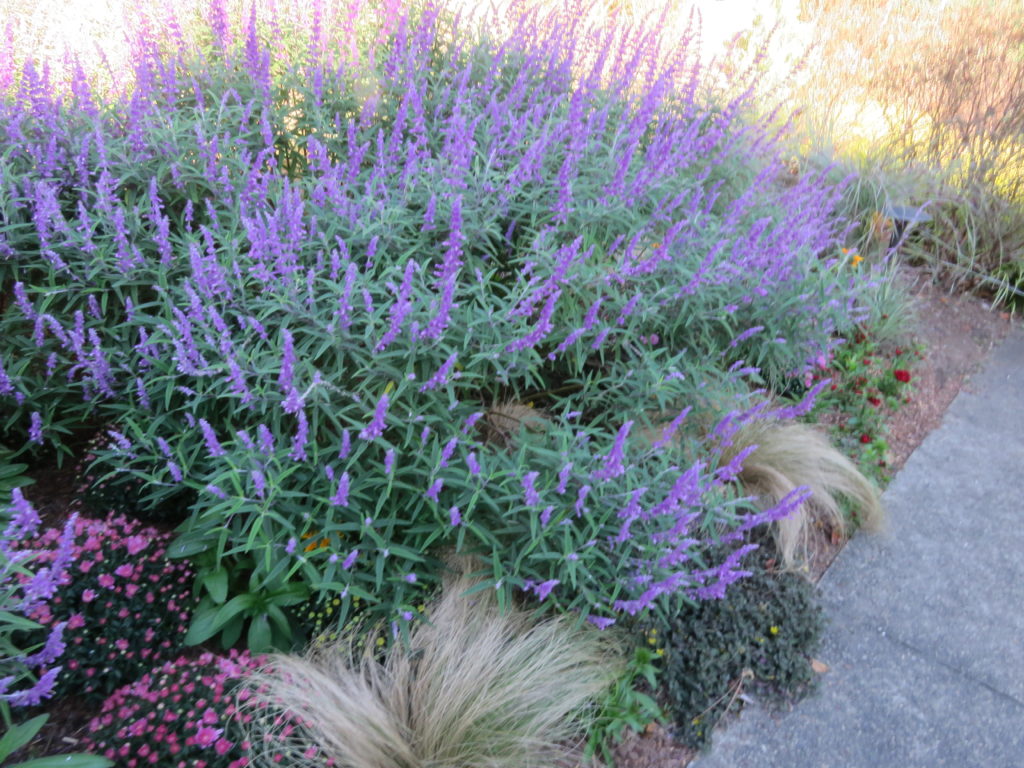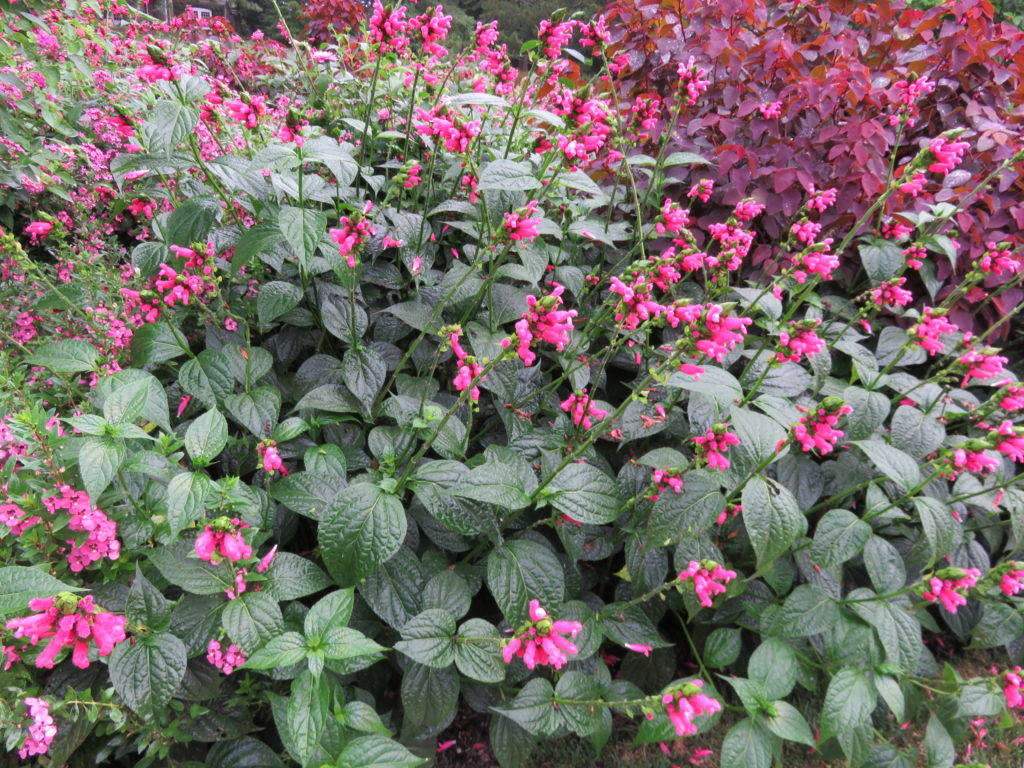Salvias are native to central South America. Some species may surprising survive here in Tennessee/Virginia (zone 7) as tender perennials. In the early days of autumn, salvias seem to revitalize – vegetatively and flower numbers. Salvias are both reliable nectar and pollen sources for butterflies and hummingbirds and are seldom damaged by deer. Listed here are four star performers in late summer and autumn.
Blue anise sage (Salvia guaranitica) is a garden annual in northern areas of the U.S. (zone 7b-10). Deep purple flowers are produced from midsummer to fall. The 2-inch long, electric blue, two-lipped, tubular flowers contrast strikingly with the blackish stems. Two cultivars – ‘Black and Blue’ and ‘Black and Bloom’ – may survive a mild winter if plants are well-mulched. Plants develop an open shrubby appearance, to 3-5 feet tall (perennialized) and 2.5 to 3 feet tall (as an annual) in garden beds or large containers.
Mexican Bush Sage (Salvia leucantha) is prized for its dense, arching spikes and ability to produce an attractive late summer bloom of showy flowers (zones 7b-10). The plant feels soft and hairy to the touch, and the bi-color blooms include white corollas and purple calyces.

Friendship Sage (Salvia x) is a showy violet-purple blooming sage. The cultivar ‘Armsted’ is an annual sage that overwinters in zone 7b.
Fuzzy Bolivian Sage (Salvia oxyphora), aka Bolivian Spearhead Sage, is fairly new in U.S. garden scene, but their bright, hot pink, fuzzy blossoms will surely make them a favorite (zones 8-10). The plant’s deep green tropical-like foliage is glossy green with clear, almost invisible hairs. Flowers appear in late June and plants continue blooming through the October frost, with terminal clusters of hairy rosy-pink tubes. It grows vigorously and can reach 4 feet in height by the end of summer.

General Care: Plant any of these salvias in the flower garden or in containers in humus-rich, medium moist, well-drained soil and in full sun. Wait until the threat of spring frost has passed. Salvias become moderately drought tolerant 6-8 weeks after planting.

 Posted in
Posted in 
